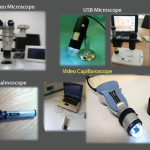Bryn Nelson, PhD, is a medical journalist based in Seattle.
References
- 1. Soldano S, Trombetta AC, Contini P, et al. Increase in circulating cells coexpressing M1 and M2 macrophage surface markers in patients with systemic sclerosis. Ann Rheum Dis. 2018 July 16. [Epub ahead of print]
- 2. Lescoat A, Ballerie A, Jouneau S, et al. M1/M2 polarisation state of M-CSF blood-derived macrophages in systemic sclerosis. Ann Rheum Dis. 2018 Sep 29. [Epub ahead of print]
- 3. Trombetta AC, Soldano S, Contini P, et al. A circulating cell population showing both M1 and M2 monocyte/macrophage surface markers characterizes systemic sclerosis patients with lung involvement. Respir Res. 2018;19(1):186.
- 4. Cutolo M, Trombetta AC, Soldano S. Monocyte and macrophage phenotypes: a look beyond systemic sclerosis. Ann Rheum Dis. 2018 Sep 29. [Epub ahead of print]

